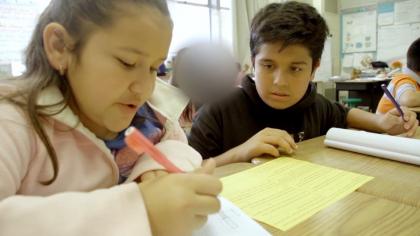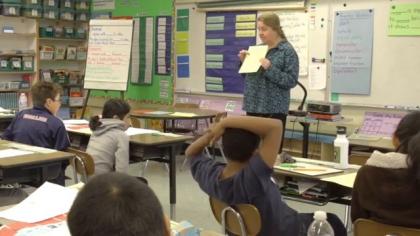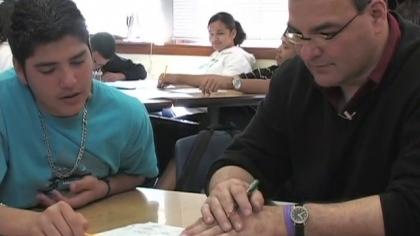Classroom Observations
Teachers who are developing students’ capacity to "reason abstractly and quantitatively" help their learners understand the relationships between problem scenarios and mathematical representation, as well as how the symbols represent strategies for solution. A middle childhood teacher might ask her students to reflect on what each number in a fraction represents as parts of a whole. A different middle childhood teacher might ask his students to discuss different sample operational strategies for a patterning problem, evaluating which is the most efficient and accurate means of finding a solution. Visit the video excerpts below to view these teachers engaging their students in abstract and quantitative reasoning.
The Standard
Mathematically proficient students make sense of quantities and their relationships in problem situations. They bring two complementary abilities to bear on problems involving quantitative relationships: the ability to decontextualize—to abstract a given situation and represent it symbolically and manipulate the representing symbols as if they have a life of their own, without necessarily attending to their referents—and the ability to contextualize, to pause as needed during the manipulation process in order to probe into the referents for the symbols involved. Quantitative reasoning entails habits of creating a coherent representation of the problem at hand; considering the units involved; attending to the meaning of quantities, not just how to compute them; and knowing and flexibly using different properties of operations and objects.
show more














